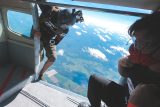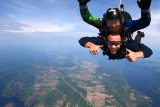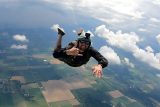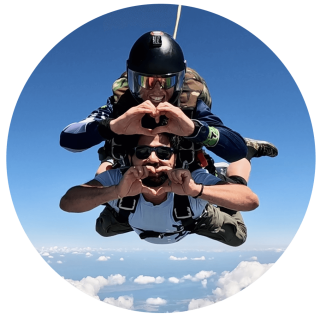Is Skydiving Safe?
Skydiving Safety
Posted by: Parachute Ottawa
2 years ago
How safe is skydiving? It’s an important question you’ll want to have answered before you book your first jump. Knowing the facts will not only help you keep your head in the game on jump day, but it will also help you to keep your Mum from freaking out! (Perhaps they’ll even sway her to join you for a tandem skydive!!)
Here, we’ll get into skydiving certification, skydiving safety statistics, and how we mitigate risk.
Spoiler alert: skydiving is a lot safer than mainstream media would have you think!

Is Skydiving Safe?
Parachute Ottawa is a proud member of the Canadian Sport Parachuting Association (CSPA), an organization formed in 1956 to oversee the safety and advancement of the sport. Today, CSPA membership includes 25 dropzones throughout the country and over 3,000 individual certified skydivers.
As any skydiver worth their salt will tell you, skydiving isn’t “safe.” Skydiving is considered an extreme sport for good reason: it’s inherently risky. And truth be told, the fear factor is part of what makes skydiving so much fun! Just because it’s dangerous, though, doesn’t mean it can’t be performed safely.
In Canada, there are three categories of skydivers – tandem students, students, and experienced skydivers – and there are stringent protocols that define each.
- Tandem students can skydive after only a brief training session; no experience is necessary. Tandem students are securely harnessed to a highly-credentialed and experienced tandem skydiving instructor who takes care of pretty much everything.
- Skydiving students are those seeking their CSPA Certificate of Proficiency (CoP). First, they earn their Solo Skydiving CoP and then pursue the A CoP. Sounds like a breeze when stated in a single sentence, but earning your CoP requires that you learn and retain a ton of information and skills.
- Experienced skydivers are those who have earned their B, C, or D CoP status. D CoP holders have a minimum of 500 jumps and three hours of freefall time. To put that in context, a tandem jump typically features 20 to 60 seconds of free fall. (BTW, your tandem instructor has at least their C CoP, a minimum of 500 jumps, and a whole lot of extra training to earn their Instructor Rating.)
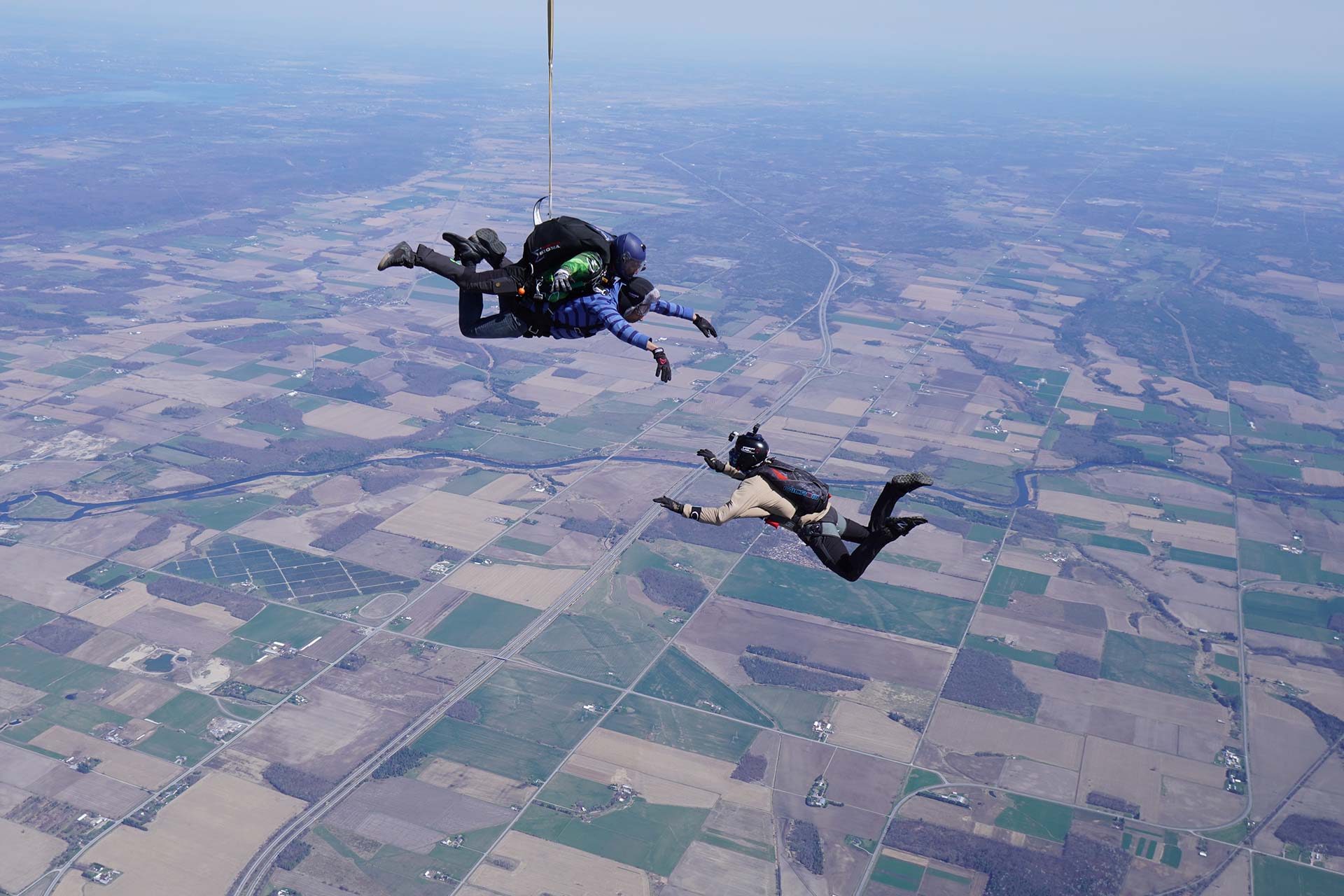
How Safe Is Tandem Skydiving?
More than 150,000 Canadians skydive every year. The vast majority of skydives are without incident – nothing but good vibes and high fives from the flight up to the amazing, life-altering trip down. But, of course, there’s a margin of error.
For decades, the CSPA has been recording the annual number and causes of skydiving incidents, accidents, and fatalities. According to the CSPA’s 2021 report, there were 25 incidents and accidents in the tandem skydiving arena last year – most of which were due to students not lifting their legs on landing. Usually, these leggy landings result in a sprain, fracture or, worst case scenario, a break. (Tandem skydiving safety rule #1: Listen to your instructor!)
One 2021 incident, however, resulted in the death of both the tandem instructor and tandem student – an unprecedented occurrence in Canada. Tandem skydiving fatalities are extremely rare – prior to 2021, Canada saw only two tandem fatalities across the span of 30 years.
These stats may seem grim, but when you consider the frequency of other “unlikely” accidents, they actually pale in comparison. Take these examples – lightning kills two to three Canadians annually; bees kill three to four; car crashes more than 1,700; and poison about 4,000! Skydiving makes people uneasy because it’s not an everyday activity, but in fact it’s a lot less dangerous than things we encounter day-to-day.
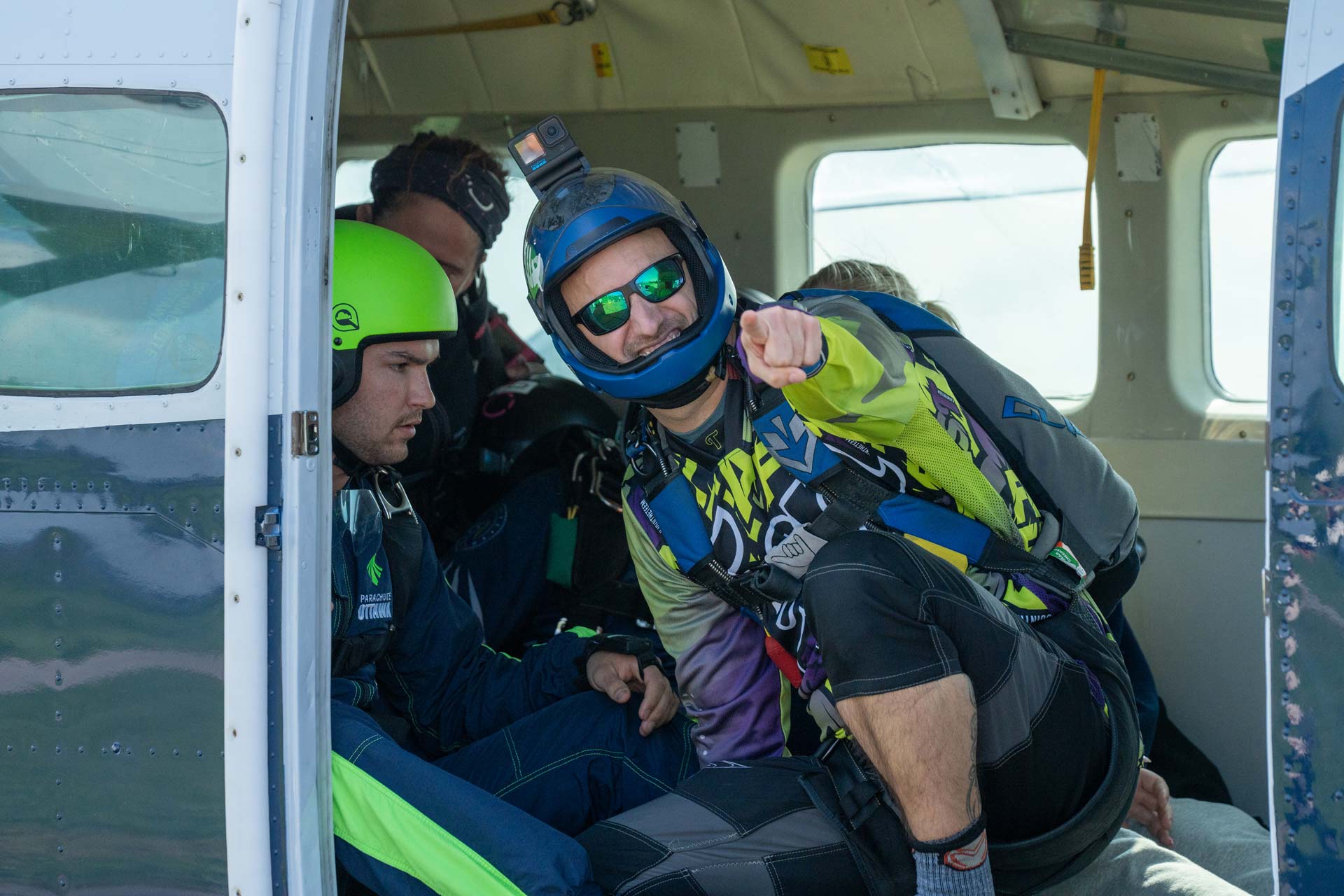
How Do You Make Skydiving Safer?
Training
While CoP requirements are mandated by the CSPA, dropzones can choose how to deliver the prescribed Solo and A curriculum. At Parachute Ottawa, for example, we teach Solo certification using the esteemed Progressive Freefall (PFF) method – which we deliver as an intensive, weeklong camp. This course format bolsters skills and knowledge retention, fosters community, and advances the sport.
Many dropzones also offer skills-building opportunities and events. As we do, they may have Load Organizers on staff who promote competency in specific skydiving disciplines and provide freefall and canopy control coaching. Some skydiving gatherings, called Boogies, are skill-specific too.
The CSPA recommends that dropzones annually host a Safety Day (we host one!). On this dedicated day, skydivers of all CoP levels spend time reviewing and actively practicing safety protocols and best practices.
Tech
Skydiving technology will blow your mind! There’s so much tech to swoon over, but we’ll give you a few of the industry must-haves.
Altimeter – An altimeter indicates a skydiver’s altitude. Visual altimeters are worn in an easy-to-see place, usually the wrist. Skydivers can also opt-in to an audible and/or peripheral vision light altimeter (always in conjunction with a visual one), which is worn inside the helmet and indicates altitude through sound or light cues. At Parachute Ottawa, we use Dekunu altimeter technology.
AAD – An Automatic Activation Device (AAD) will automatically deploy the parachute at a predetermined altitude in the event the jumper fails to manually do so. All skydivers at Parachute Ottawa, regardless of CoP level, must jump with an AAD. Gear we provide to our tandem students and PFF students, as well as our rental gear, is kitted out with a CYPRES AAD.
Reserve Parachute – Every skydiving rig includes two parachutes, a main and a reserve. In the event the main canopy needs to be cut away, the skydiver can deploy the reserve chute. Per CSPA guidelines, the reserve must be inspected and repacked every 180 days, regardless of use. At Parachute Ottawa, we exclusively use Performance Designs canopies.
Skyhook – The UPT (United Parachute Technologies) Skyhook utilizes the force created by a cutaway main to deploy the reserve. This significantly decreases the time between cutaway and canopy cover. These are required by the CSPA for tandem students and PFF students, but at Parachute Ottawa we strongly encourage every skydiver to jump with one.
Water Gear – Unaccompanied skydivers jumping within 1 klick of water, and who have not yet achieved their B CoP, must jump with water gear. This is essentially a belt bag containing a life jacket.
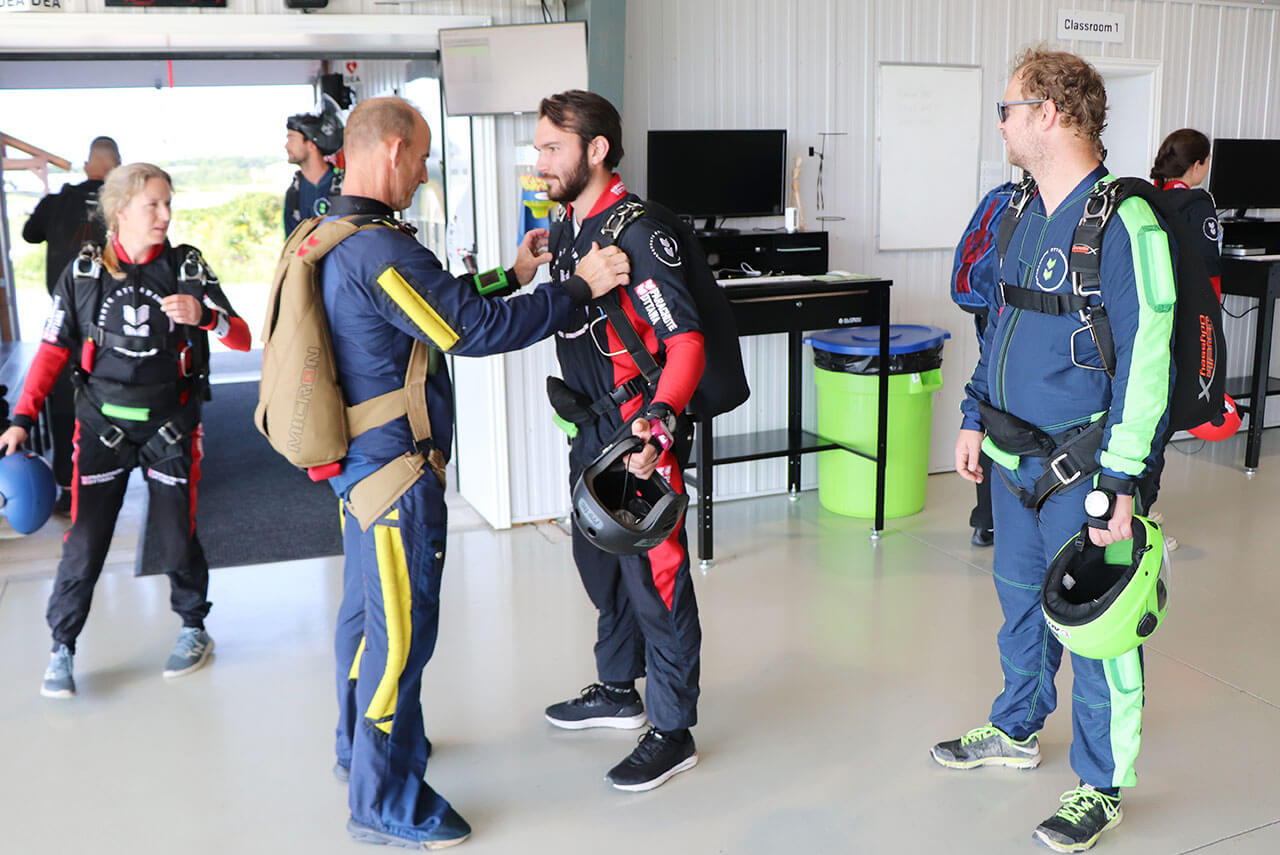
Accountability
Skydivers are painted to be a wild and crazy bunch who throw caution to the wind. In reality, this couldn’t be further from the truth! Accountability plays a major role across the international skydiving community.
We know that our sport can only thrive if practiced responsibly. A few can ruin it for the many. As such, we will offer constructive feedback to a fellow skydiver whose technique needs some love – and we expect to be given feedback too.
“You guys like your gear checks here, eh?” This is a question we were asked recently because we are super serious about gear checks. Don’t like it – too bad! Safety first; period.
Phew! That was a lot of info – and we only scratched the surface on skydiving safety! But now you have a good resource to share with your Mum when she inevitably asks, “How safe is it to skydive?” Boom. You’re welcome!
Ready to go skydiving in Ontario? Let’s GOOOOOO! Blue skies!
